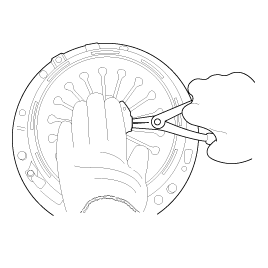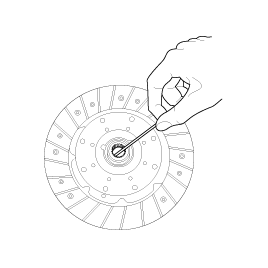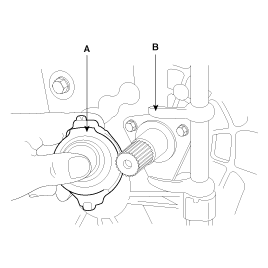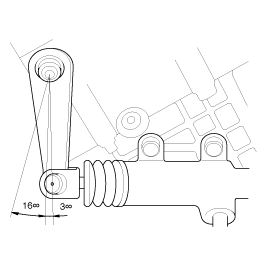If the clutch cover is attached to the flywheel, remove the release bearing using snap-ring pliers.
Rotate the release bearing in an easy direction in order to examine the snap ring.
Insert the pliers under the wave washer as shown in the illustration and place it in the center of the snap ring.
Spread the snap ring by pushing down on the bearing as shown in the illustration.

The snap ring (A) at expanded state is shown in the figure.

In the snap ring expanded, pull out the release bearing and remove it.






